Marine Desert Adventure
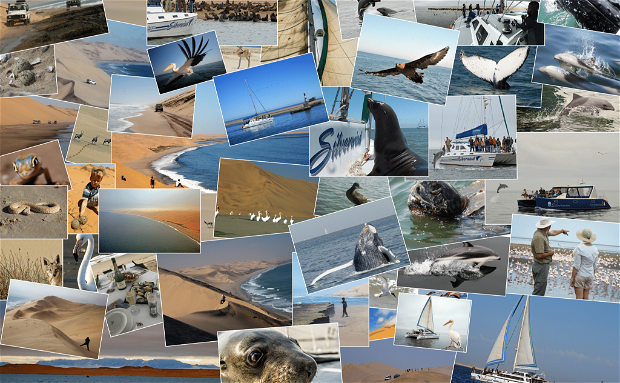
Experience leasure sailing on the south Atlantic ocean in search of the marine Big 5 and a thrilling 4x4 ride through the majestic dunes to the breathtaking Sandwich Harbour. – all in one day!
Morning Marine Adventure: Set sail with us between 08:45 and 09:00 (check-in at 08:30) from our jetty at the Walvis Bay Waterfront. Begin your day with a steaming cup of coffee or tea as we embark on a marine educational sailing excursion in search of the Marine Big 5: Whales, Dolphins, Mola (Sunfish), Leatherback turtles, and Seals. Our journey takes us past bustling oyster farms and towards the iconic Pelican Point, home to a historic lighthouse and 60,000 Cape Fur Seals.
From July to November, be on the lookout for larger marine giants like the Southern Right Whale and Humpback Whales. Other remarkable species such as the Gray whale and Pygmy Right whale also make occasional appearances. The friendly Bottlenose, Heaviside, and Dusky dolphins often join us, curious about our presence. Alongside these magnificent creatures, spot Sunfish and Leatherback Turtles and enjoy the company of diverse seabirds like the Kelp Gull, Hartlaub’s Gull, Pelicans, Skua, and Cape Cormorant.
Midday Delight: As we cruise past intriguing ships and oil rigs, indulge in fresh oysters paired with sparkling wine, along with a selection of savory snacks, desserts, light drinks, cool drinks, and water. We'll return to the Waterfront around 12:30, where your Sandwich Harbour 4x4 guide will be ready to escort you to your next adventure.
Afternoon Sandwich Harbour Excursion: Our first stop is the stunning Walvis Bay lagoon, a RAMSAR site and home to thousands of migratory birds. Here, observe the vibrant Greater and Lesser Flamingos before we continue to the vast Walvis Bay salt pans. These salt pans, covering 4,500 hectares, produce 700,000 tons of high-quality salt annually.
Passing through the Kuiseb River Delta, we head towards Sandwich Harbour. If the tide permits, we’ll drive along the beach; otherwise, we’ll traverse the dunes for an exhilarating ride. Our destination, the lookout point atop a high dune, offers breathtaking views of the entire Sandwich Harbour Lagoon. Once a trading port, this lagoon is now a protected area and another RAMSAR site.
Photography Paradise: With plenty of stops along the way, the unique shapes, colors, and textures of the Namib dunescapes provide perfect backdrops for holiday photos. Both amateur and professional photographers will find ample opportunities to capture the beauty of this landscape. Don’t forget your camera and wide-angle lens!
Culinary Delights and Wildlife Encounters: Enjoy our world-famous oysters, sparkling wine, and refreshing drinks while taking in views from high dunes, beaches, or among the dunes, depending on weather conditions. On our return, we'll pass through areas rich in typical fauna and flora, including the endemic !Nara plant. Look out for desert-adapted animals like the black-backed jackal, fog-basking beetle, dancing spider (the 'white lady of the Namib'), golden mole, shovel-snouted lizard, palmato gecko, springbok, oryx, brown hyena, and ostrich.
We conclude our adventure back at Walvis Bay at 16:30. Join us for an unforgettable journey that combines marine wonders, stunning landscapes, and delightful culinary experiences.
Gallery
Itinerary
Walvis Bay, Waterfront
The day starts with a marine educational cruise on one of our luxury catamarans at 09h00 in search of the marine big 5: Whales, Dolphins, Mola, Leatherback turtle and seals.
Pelican Point
hile serving hot coffee and tea, our initial route takes us past oyster farms as we approach Pelican Point with its landmark lighthouse and 50,000 resident cape fur seals.
In season (July to November), larger mammals such as the Southern Right Whale and Humpback Whales are often spotted, while other whale species, such as the Gray whale and the Pygmy Right whale have made appearances.
Bottlenose, heaviside and dusky dolphins are regularly seen, as are Mola Molas and Leatherback Turtles. Accompanying our three catamarans throughout are a variety of seabirds, such as the Kelp Gull, Hartlaubǯs Gull, Pelicans, Skua and Cape Cormorant.
Pelican Point - Waterfront, Walvis Bay
Our journey from Pelican Point takes us past some of the more interesting ships in the bay as we serve fresh oysters with sparkling whine, savoury snacks and desserts together with light drinks, cooldrinks and water.
We return to the waterfront at 12h30, where your Sandwich Harbour 4x4 guide will meet you with one of our all-wheel drive vehicles.
Kuiseb River Delta via the Walvis Bay Saltpans
On the way to the Sandwich Harbour Area, we stop at the Lagoon to view the flamingoes, before we head towards the Kuiseb River Delta via the Walvis Bay Saltpans.
Depending on the tides and the swell, we will try to reach the Sandwich Harbour Lagoon along the beach, one of Southern Africa's richest and unique wetlands.
Alternatively, we will take an exciting dune ride to our lookout dune to get an aerial view of the Sandwich Harbour Lagoon. We have lots of time to stop along the way for photography.
Light meal overlooking the Atlantic Ocean
We stop along the way to enjoy our world famous oysters, sparkling wine, drinks and coldrinks.
Depending on the weather condition, we do this on top of a high dune overlooking the Atlantic Ocean, on the beach, or among the dunes.
Back to Catamaran Charters HQ
The route homewards will take us past the area's typical fauna and flora, including the endemic Nara plant.
Animals which have developed ways to adapt to the desert include the black-backed jackal, fog-basking beetle, dancing spider (white lady of the Namib), golden mole, shovel-snouted lizard, palmato gecko, springbok, oryx, brown hyaena and ostrich. We return to Walvis Bay at 17h00.


















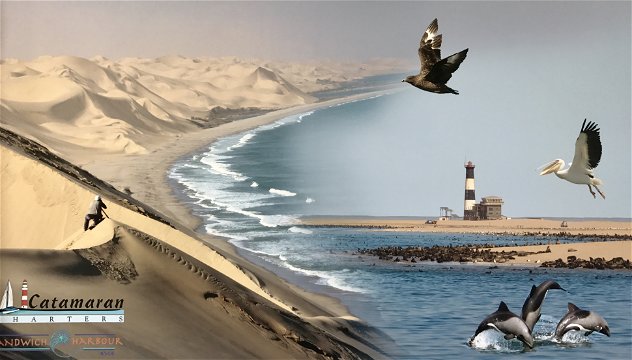
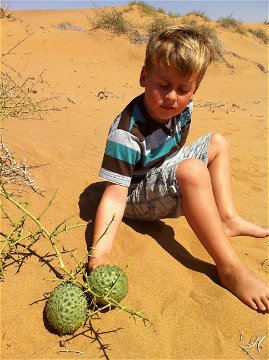
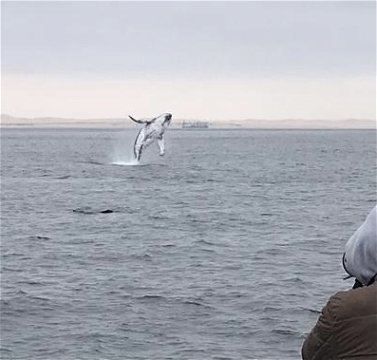
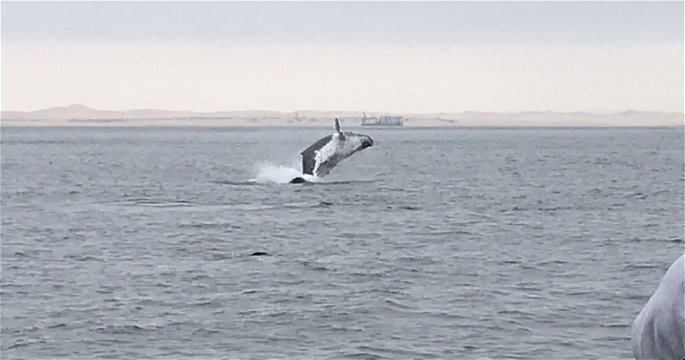
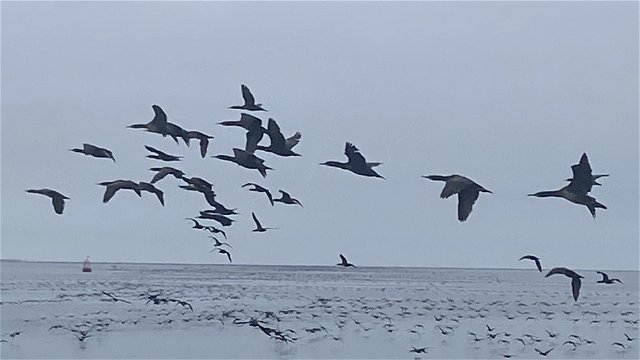
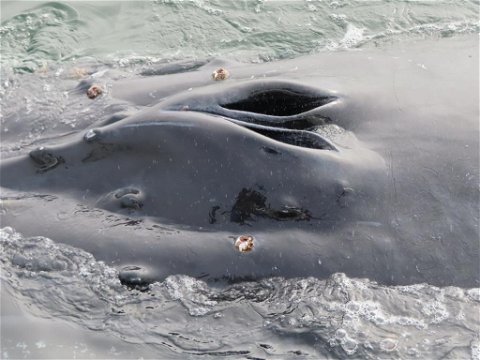

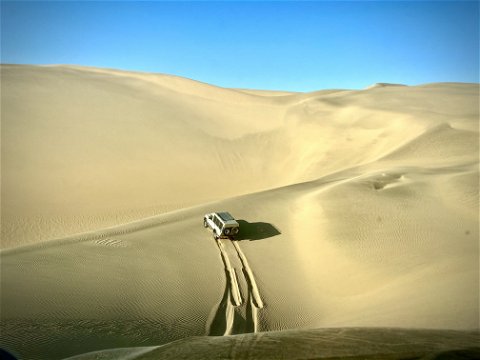
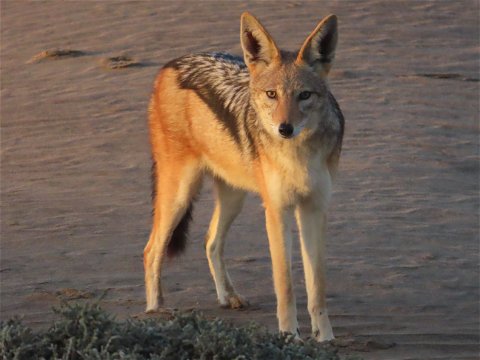
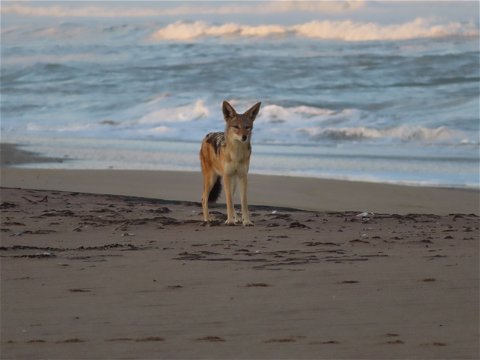
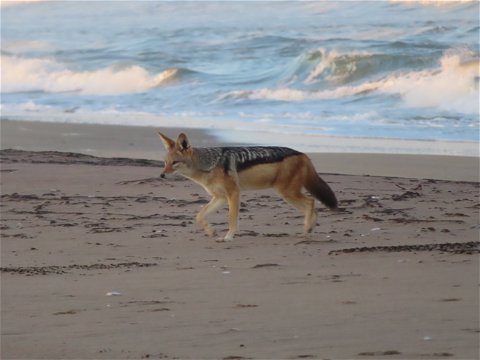
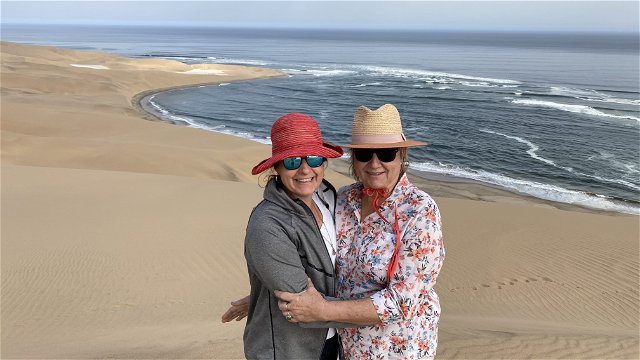


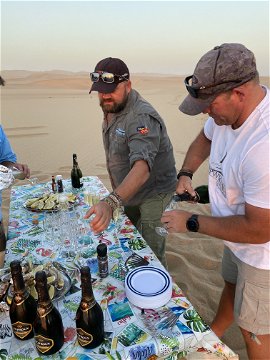
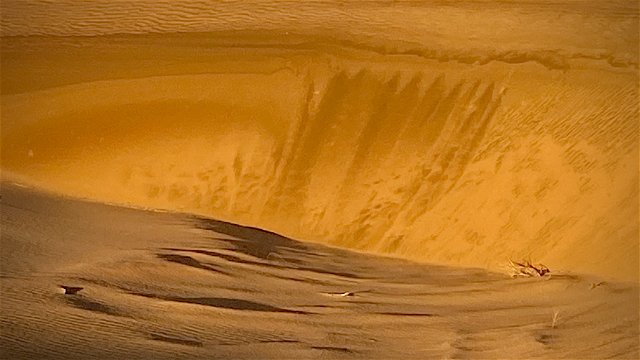
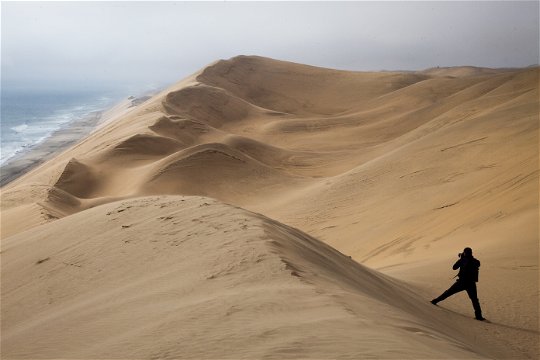

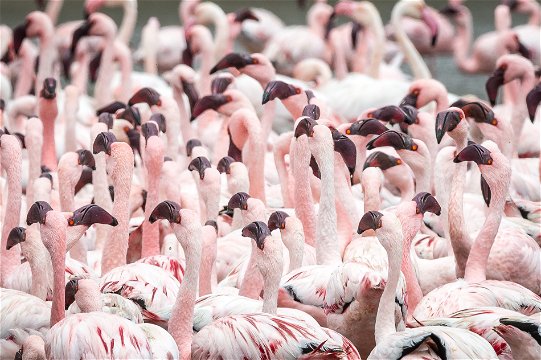
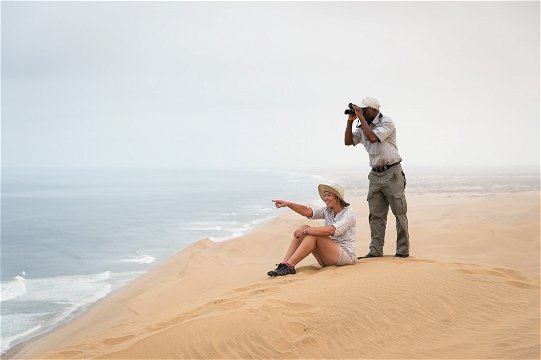
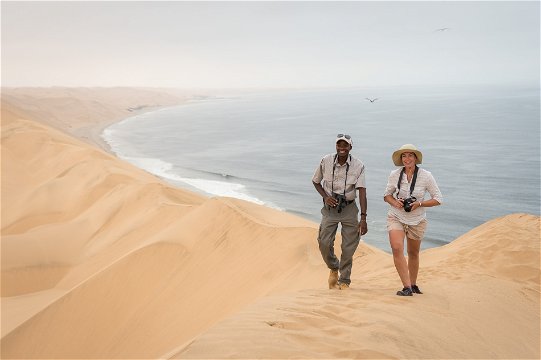

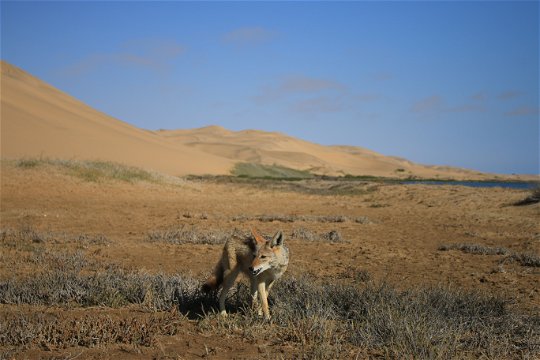
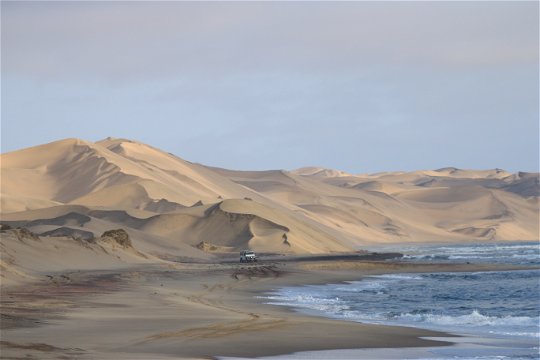
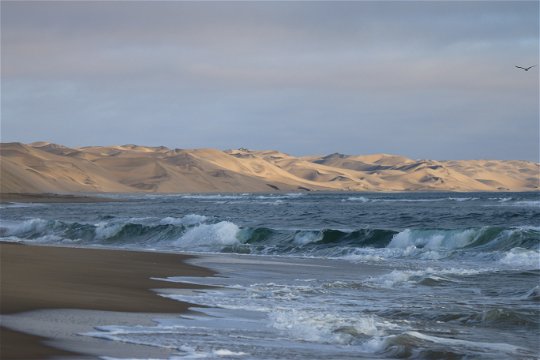
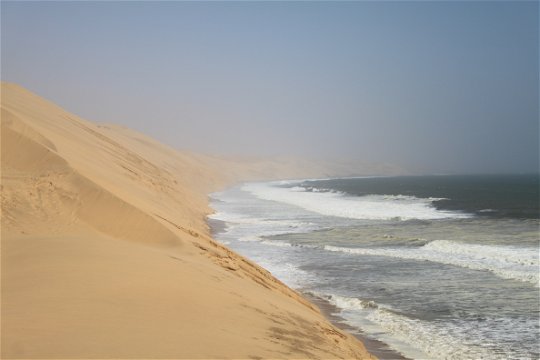
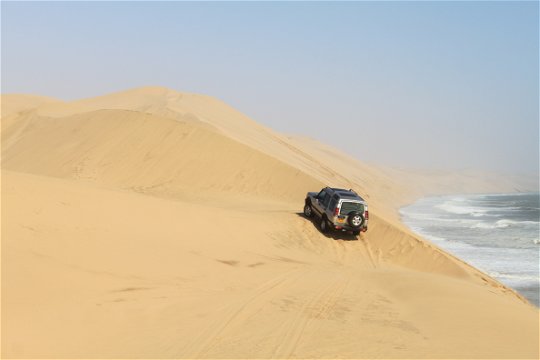
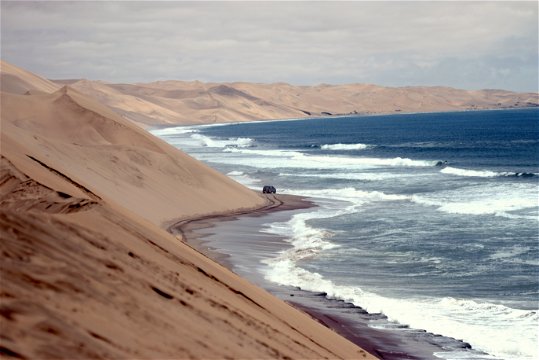
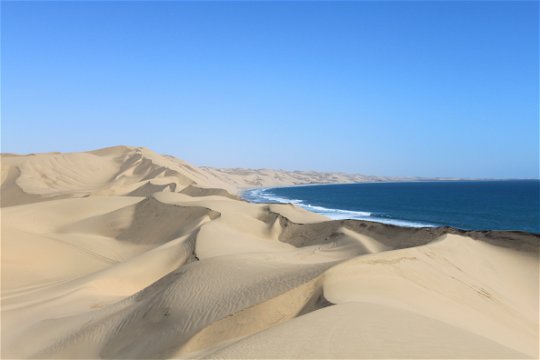
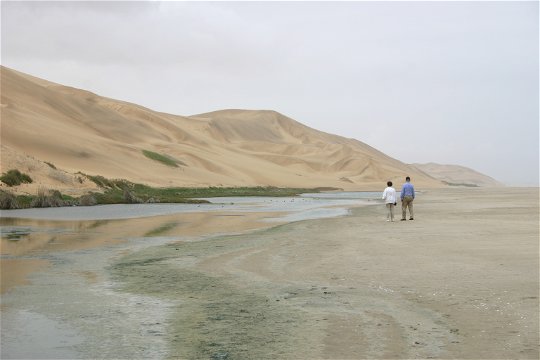
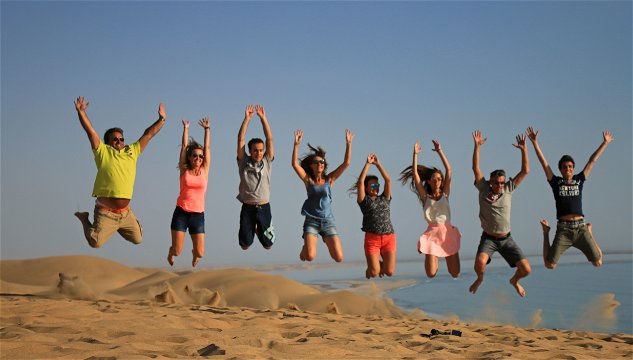
Share This Page